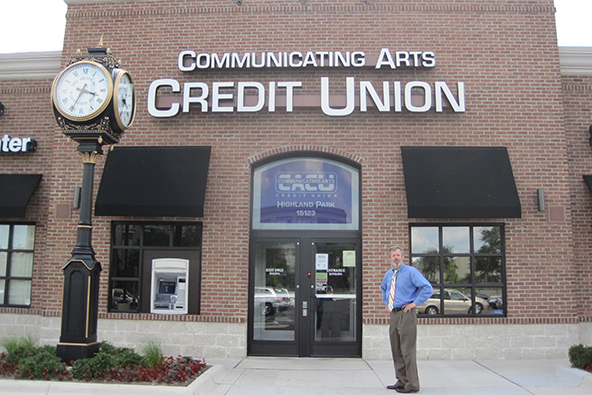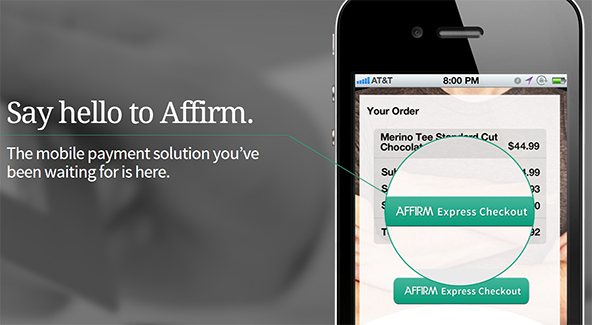Credit Unions Muscle in on Big Bank Territory

The debit interchange war, which culminated in the Durbin Amendment to the sweeping Dodd-Frank financial reform bill that was passed last year, is typically seen as a huge win for the big-box retailers and it is. What is much less appreciated is the fact that the nation’s credit unions, which neither started the fight nor actively participated in it, emerged in its aftermath as big winners in their own right.
Now the entirely predictable attempts of Bank of America, Wells Fargo and the other big banks to make up for lost interchange revenues, and the just-as-predictable consumer outcry against it, are making the credit unions’ position even stronger and they are poised to reap the benefits that come with it.
Why Are Credit Unions Winners of the Interchange War?
The Durbin Amendment mandated the Federal Reserve to ensure that the fees card issuers charge merchants every time they accept a debit card for payment — the interchange fees — are “reasonable and proportional.” By the Fed’s initial reckoning this meant that issuers could charge no more than $0.12 per debit transaction, an enormous 70 percent decrease from the pre-Durbin average of $0.44.
Following some additional wrangling the limit was lifted to a compound rate that is made up of two separate per-item fees and a percentage rate, and averages $0.24 per transaction. At this point the huge 45 percent drop in interchange fees from their pre-reasonable average looked somewhat modest in comparison to the initial proposal.
However, it was decided that not all issuers were created equal. Financial institutions with less than $10 billion in assets were exempted from the interchange limit and could go on charging interchange fees at their pre-reasonable-and-proportional rates, which by the way are set by Visa and MasterCard for all transactions involving cards bearing their logos.
As most credit unions have less than $10 billion in assets, they can now charge merchants 83 percent more than their bigger competitors per debit transaction ($0.44 vs. $0.24), while at the same time stand ready to pick up a flood of new customers fleeing big-bank outrages in the form of various new debit-related fees.
How Are Credit Unions Doing?
Earlier this month the National Association of Federal Credit Unions (NAFCU) reported that:
Traffic to CULookup.com, NAFCU’s credit union locator site, continues to see growth in traffic, with a 350 percent increase in the two weeks since Bank of America and other banking giants announced plans to begin assessing debit-card and checking fees.
NAFCU did not release figures on the actual bank-to-credit-union conversion rate, but the trend has surely received a further boost by the Occupy Wall Street movement and projects like the “Bank Transfer Day,” scheduled by a Facebook group for Nov. 5 when bank customers are encouraged to move their money into a credit union.
Of course, credit unions are more than happy to get as much new business as comes their way. “Why wait [for Nov. 5]?,” asks Patty Briotta, NAFCU’s public relations manager. “We encourage people to explore their options and vote with their money every day and join a credit union.”
The Takeaway
Bombarded with news of protests, occupations, bank transfer days, etc., one may be forgiven for losing sight of the issue that started the whole thing — the size of the interchange fees. It seems to me that the issue is a very simple one. If a fee charged by one bank to a retailer is considered too high, it should also be considered too high if another bank charges it to the same retailer. I really cannot see it any other way and I can guarantee you that retailers see it exactly the way I do.
Of course, the exemption of small banks and credit unions from the Fed’s interchange rule had a specific purpose, which was formulated by economist Simon Johnson as “level[ing] the playing field with larger banks to some degree.” Johnson called it a “smart political move.”
Whatever the real motives behind it, the Durbin Amendment is here to stay and everyone affected by it is now adjusting to the new environment. Even as Wells Fargo has now decided against charging a $3 debit fee, I still believe that eventually the big banks will manage to recoup their interchange-related losses, of course at consumers’ expense. It is also clear that in the short run we will see a surge of defections from big banks to credit unions. What remains to be seen is whether consumers will enjoy banking with credit unions.
One must feel the retailers’ pain, though. Having fought so hard for lower interchange rates, they can’t be happy watching credit unions taking market share from the banks. After all, from their point of view, a dollar is a dollar, whether charged by a big or a small bank.
Image credit: Wikimedia Commons.



A couple of weeks ago I heard a remark from Congressman Durbin about the bank charging fees to recoup the cost. Of course, he acted surprised that the bank would have the nerve to try and recoup any cost but he said something like…”I hope everyone shifts their banking to the credit unions”. Makes me wonder if that was his purpose in the first place and I also wonder if he was receiving contributions from credit unions or smaller banks. Part of me wants to say he wasn’t smart enough to look that far ahead because when big changes like this happen politicians rarely see the big picture and are only looking at what will benefit them. Then again, he may have been very cunning and new this all along. Either way, I never liked the decision anyway and ultimately I think the merchant will not win on the Durbin Amendment.
I also agree on your point concerning the interchange pricing affecting the large banks verses the small ones. Why would they not make the change across the board if it was to benefit the merchants? Why do they need to level the playing field and who says it isn’t a level playing field? This is probably a stupid question but are credit union employees part of a union? I guess I have never understood the nature of a credit union but maybe it is because it really is a union. If that is the case then Durbin really is cunning and new all along what he was doing. Very nasty!
Um. No. Members of a credit union are not a “union” in the traditional labor sense of the word. It is a not-for-profit structure where those who deposit their funds are considered shareholders. They function to benefit their members, so fees and charges are less than what a depositor would experience at a bank and interest rates are generally more favorable in either direction (i.e. lending or borrowing). I know you all love to be anti-union, but that’s not what a credit union is about.
Came here from the article linked to my name trying to see the whole picture… This is outrageous. I didn’t even know that the fees were so great, and that the banks actually throw those on the merchants and, now, on the customers. It’s called business. You pay for raw materials yourself to offer a service that in turn will win you more than what you invested (the fee to have people use plastic). Get a grip and stop stealing from customers, and stop blaming the big machine for the fact that customers leave big banks. I personally didn’t leave because of the debit fee, I left because of that last push the fee gave me. BofA is the most racist, idiotic, full of incompetent workers in the industry. The policies always work against the customers, and I’ve had to ask for stolen money (by BofA itself) back numerous times. There’s always a hidden fee with BofA. Always a $12 monthly service fee that shouldn’t be there. I left BofA because they steal, not because of the outrageous stupidity of charging additional Checking fees.
Oh yeah, I also used to bank with 5/3. Racist people there too. Same outrageous fees, same stupid workers. I also bank with Wells Fargo from back when Wachovia was running the show. They just let me know they’re instituting the monthly fee for checking accounts this October of 2012. I’ve already notified them that I’m leaving if nothing changes. Oh, and guess what: they too have sub-par employees, policies that go against the customer (like purposefully delaying a deposit until a charge posts that brings the account to a negative balance just to charge you $35).
So stop getting drunk on water big banks: we hate your service primarily because you treat us like retarded people who should rejoice in the privilege that they can even step foot in your bank. You forget we lend you money with a checking and a savings account. That’s a privilege for YOU and a big fat business opportunity! This new checking fee just helps us jump ship because enough is enough.